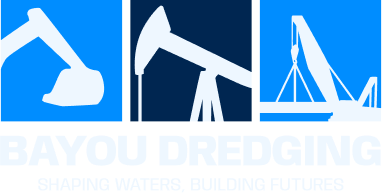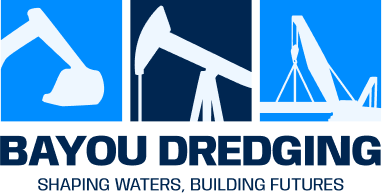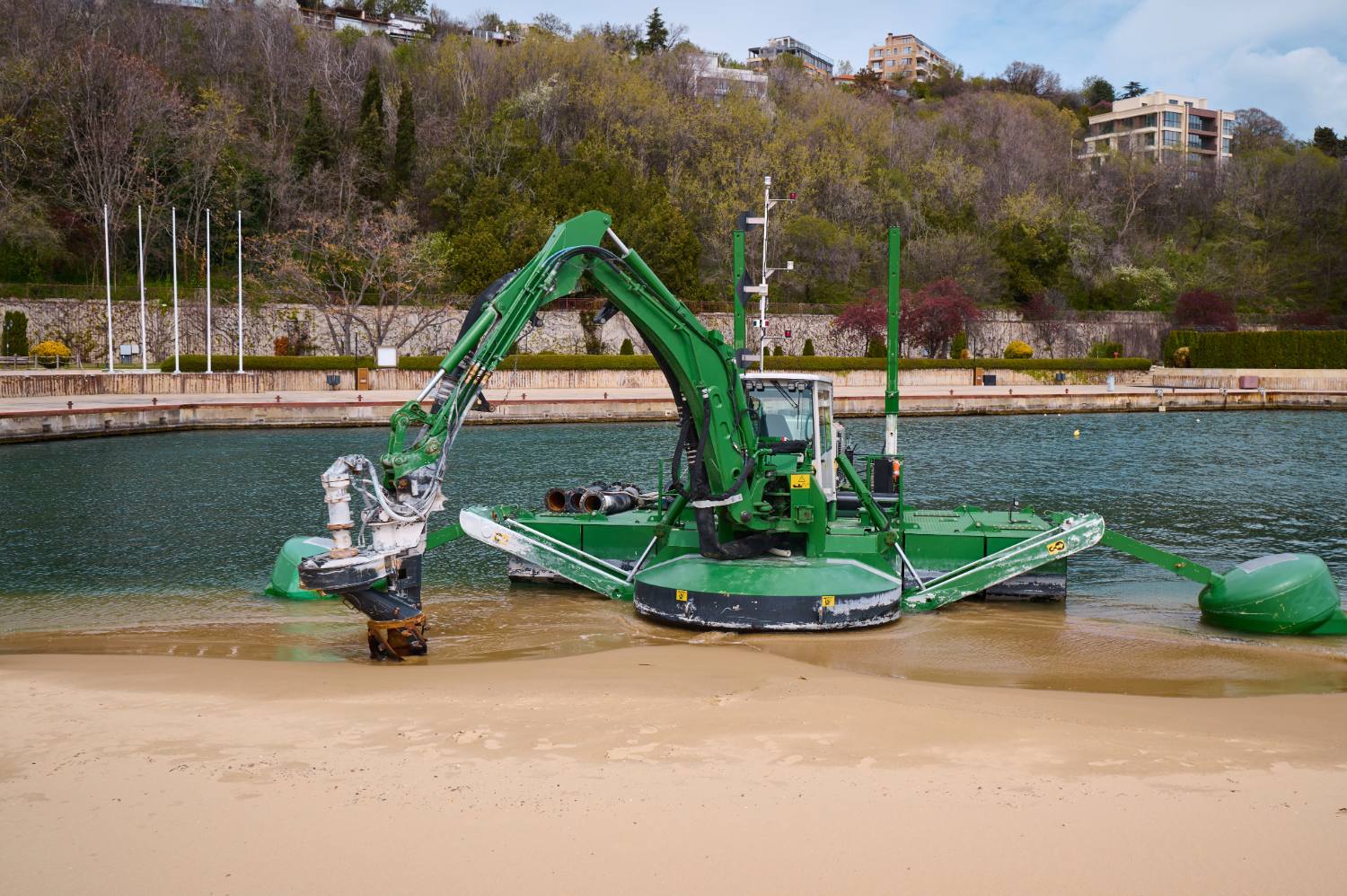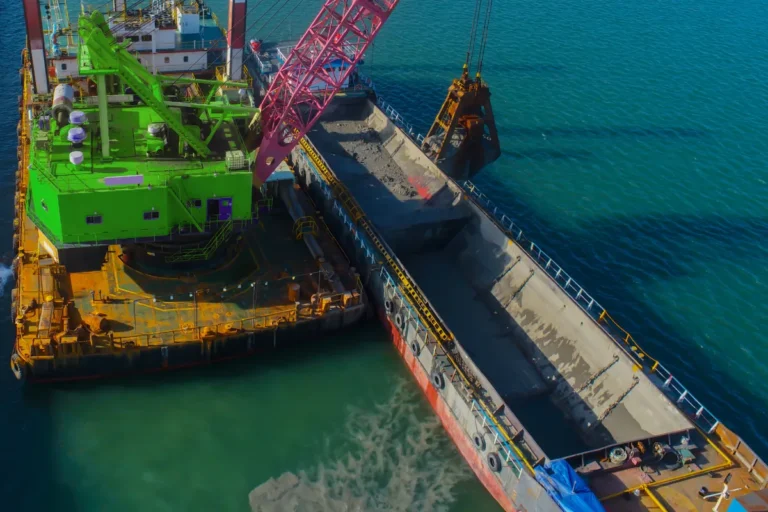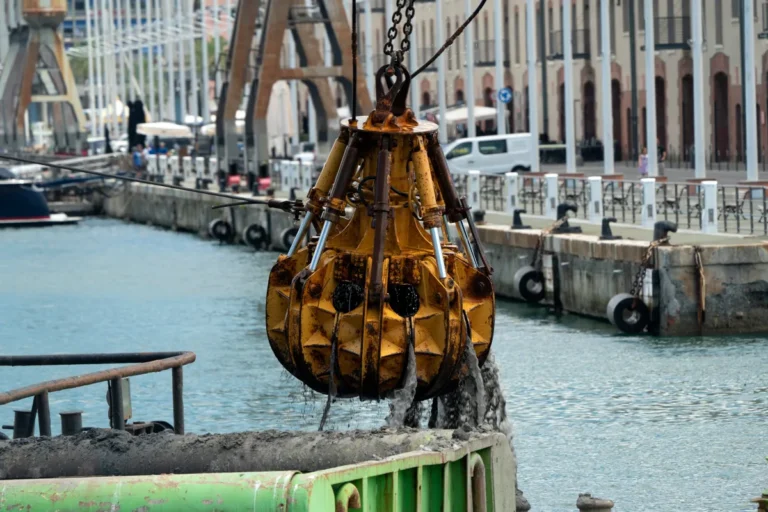Dredging machines are essential tools for removing sediments, debris, and other materials from water bodies. Whether for harbor maintenance, sand mining, environmental cleanup, or land reclamation, these machines play a crucial role in maintaining navigable waterways and creating stable foundations for construction projects. By using specialized equipment such as sand dredging equipment and dredge sleds, dredging operations can efficiently move large volumes of material, ensuring smooth and uninterrupted project progress.
Choosing the right dredging machine is vital for optimizing project efficiency and minimizing operational costs. Different dredging applications require distinct machine features, from high-capacity pumps to specialized cutting heads designed for compacted soils or fine sediments. Selecting the most suitable dredging machine not only boosts productivity but also reduces maintenance demands and environmental impact. When it comes to short-term or project-specific dredging needs, knowing how to match equipment, like sand dredging equipment or a dredge sled, to the task at hand can make a significant difference in overall success.
Understanding Dredging Machines
A dredging machine is a specialized piece of equipment designed to remove sediments, debris, and other materials from the bottom of water bodies such as rivers, lakes, harbors, and coastal areas. The primary purpose of these machines is to maintain navigable waterways, extract sand and gravel for construction, and facilitate environmental cleanup by removing pollutants settled at the bottom. By efficiently excavating and transporting sediments, dredging machines help maintain waterway depth and support various industrial and environmental projects.
There are several types of dredging machines commonly used across different industries, each designed for specific applications. The most popular types include:
- Cutter Suction Dredgers (CSD): These machines use a rotating cutter head to break up compacted sediments, making them ideal for deepening harbors and channels.
- Jet Suction Dredgers: Suitable for loose, sandy sediments, they use high-pressure water jets to dislodge material and suction it through a pipeline.
- Bucket Dredgers: These machines use a series of buckets to scoop up sediments, effective for removing dense or rocky material.
- Trailing Suction Hopper Dredgers (TSHD): These vessels move while dredging, collecting sediments into a hopper for later disposal.
- Dredge Sleds: Ideal for shallow waters and narrow channels, these compact machines are specifically designed to remove sand and fine sediments efficiently.
- Sand Dredging Equipment: Designed to handle sandy and loose material, these machines are often used in sand mining and beach restoration projects.
Unlike other sediment removal equipment, dredging machines are designed to operate continuously over large areas, effectively transporting dredged material through pipelines or hoppers. While equipment like excavators and backhoes can perform localized sediment removal, they lack the efficiency and reach of dedicated dredging machines, especially for aquatic environments.
In particular, sand dredging equipment and dredge sleds are crucial for projects where precision and gentle sediment handling are essential. Sand dredging equipment is commonly used for sand mining, beach nourishment, and maintaining sandbars. On the other hand, dredge sleds are lightweight, maneuverable devices used in shallow, sandy waters to remove debris and sediment without disrupting the ecosystem. Their specialized design makes them ideal for small-scale projects or maintenance tasks where larger dredgers are impractical.
Key Features to Look for in a Dredging Machine

Choosing the right dredging machine requires careful evaluation of various features to ensure optimal performance and cost-effectiveness. Whether you are looking for sand dredging equipment or a dredge sled, understanding these critical aspects will help you make an informed decision.
Power and Capacity
One of the foremost considerations when selecting a dredging machine is its power and capacity. The horsepower of the machine determines how efficiently it can excavate and transport sediment. High-capacity dredging machines are essential for large-scale projects like harbor deepening, while lower-capacity units are suitable for smaller operations. Additionally, assessing the material handling capacity helps ensure that the machine can move the required volume of sediment without frequent blockages or performance issues.
Versatility
A versatile dredging machine can handle a range of sediment types, including sand, silt, and gravel. This adaptability is crucial when dealing with varying underwater conditions. Machines designed as sand dredging equipment are specifically engineered to extract loose and granular materials efficiently, while more robust models can cut through compacted soils or mixed sediments. A dredge sled, known for its maneuverability in shallow waters, is ideal for handling sandy and light sediments with minimal environmental impact.
Mobility and Portability
For small-scale or remote projects, the mobility and portability of a dredging machine are essential. Lightweight and compact machines like dredge sleds offer easy transportation and quick deployment, making them highly practical for maintaining ponds, small rivers, or confined waterways. In contrast, larger stationary dredgers are suitable for long-term, large-scale operations. Opting for a portable machine reduces setup time and increases flexibility, especially in areas with limited access.
Efficiency Metrics
Efficiency is a key factor in maximizing project output while minimizing operational costs. Important efficiency metrics for a dredging machine include pump output, sediment handling speed, and the ability to maintain consistent suction. High pump output ensures that the dredged material is moved quickly and effectively through the pipeline, while a fast sediment handling speed reduces the time required for each dredging cycle. Sand dredging equipment with powerful suction capabilities and durable pump components ensures smooth and efficient operation, even in demanding conditions.
Maintenance and Durability
Dredging projects can be labor-intensive and time-sensitive, making the durability of a dredging machine a crucial consideration. Machines designed for continuous operation should have robust components, corrosion-resistant materials, and easily accessible maintenance points. Regular upkeep is vital for reducing downtime, so choosing equipment with low maintenance requirements can significantly improve project efficiency. Many modern sand dredging equipment models come with automatic monitoring systems to detect wear and tear early.
Safety Features
Ensuring operator safety and minimizing environmental impact are critical when using any dredging machine. Safety features such as emergency shutdown systems, reinforced operator cabins, and safety alarms help protect workers during operation. Additionally, environmental safety measures—such as sediment containment and controlled discharge options—are particularly important when using sand dredging equipment or dredge sleds in ecologically sensitive areas. Machines designed with safety in mind not only protect personnel but also help maintain compliance with environmental regulations.
Selecting a dredging machine that combines power, versatility, efficiency, durability, and safety will optimize project outcomes and ensure smooth operations. Whether choosing sand dredging equipment for mining or a dredge sled for shallow water maintenance, considering these features will lead to better long-term performance and cost savings.
Functions of Dredging Machines

A dredging machine is designed to perform several critical functions in sediment removal and waterway maintenance. From excavation to material transport and disposal, each function is essential to ensure efficiency and compliance with environmental regulations. Depending on the project, specialized equipment like sand dredging equipment and dredge sleds can further enhance performance and suitability for specific tasks.
Sediment Excavation
The primary function of any dredging machine is to excavate sediments from the bottom of water bodies. This process involves loosening compacted materials such as sand, silt, clay, or gravel. Various techniques are employed depending on the sediment type and project requirements:
- Mechanical Excavation: Uses cutting heads or bucket systems to break up dense or rocky materials, commonly seen in cutter suction dredgers and bucket dredgers.
- Hydraulic Suction: Utilizes powerful pumps to suck up loose or semi-loose sediments, ideal for projects involving sandy or fine-grained material.
- Jetting Systems: High-pressure water jets are used to dislodge sediments, making this method effective for loose sands and riverbed materials.
- Dredge Sled Operations: Specifically designed for shallow waters, dredge sleds glide along the bottom, scooping up sand and other lightweight sediments efficiently.
By employing the appropriate excavation technique, a dredging machine can optimize sediment removal based on the nature of the material and the project’s complexity.
Material Transport
Once excavated, the next function of the dredging machine is to transport the dredged material. Efficient material handling is crucial for minimizing project duration and maintaining consistent output. Transport methods include:
- Pipeline Systems: High-capacity pumps transport sediment through pipelines to designated disposal areas. This method is common in sand dredging equipment, where the loose material needs swift relocation.
- Hopper Storage: Some dredging machines, like trailing suction hopper dredgers, temporarily store dredged material on board before offloading.
- Container Loading: In smaller or confined projects, dredged material may be loaded directly into containers or barges for transport.
- Dredge Sled Conveyance: In shallow water applications, dredge sleds use onboard pumps to move collected sediments through short pipelines, ideal for localized sediment management.
Choosing the right material transport system ensures the dredging operation remains cost-effective and minimizes the risk of pipeline blockages or overflow.
Discharge and Disposal
The final stage of the dredging process involves discharging the collected sediment at an appropriate disposal site. Effective disposal management is crucial to minimizing environmental impact and adhering to regulations. Typical discharge methods include:
- Direct Placement: Pumping dredged material to a designated location, such as a beach or reclamation site.
- Confined Disposal Facilities (CDFs): Used for contaminated or fine-grained sediments to ensure safe containment.
- Open Water Disposal: Dumping sediments into approved offshore sites after environmental assessments.
- Land Reclamation: Using the dredged material to build or enhance land areas, particularly in coastal engineering projects.
- Sand Replenishment: With sand dredging equipment, dredged sand can be deposited to restore eroded beaches or riverbanks.
Ensuring proper disposal is essential for maintaining environmental safety and project sustainability.
Specialized Functions
Certain dredging projects require specialized functions that standard machines may not offer. For instance, sand dredging equipment is specifically designed to handle loose, granular sediments, making it highly efficient for sand mining and beach nourishment projects. On the other hand, dredge sleds are engineered for shallow and narrow waterways where conventional dredgers cannot operate efficiently. Their compact size and maneuverability make them perfect for maintaining small rivers, ponds, and lake shorelines.
In summary, understanding the core functions of a dredging machine—from excavation to disposal—helps in selecting the right equipment for your project. Utilizing specialized tools like sand dredging equipment and dredge sleds ensures that even niche applications are handled with precision and efficiency.
Matching Dredging Machines to Project Needs
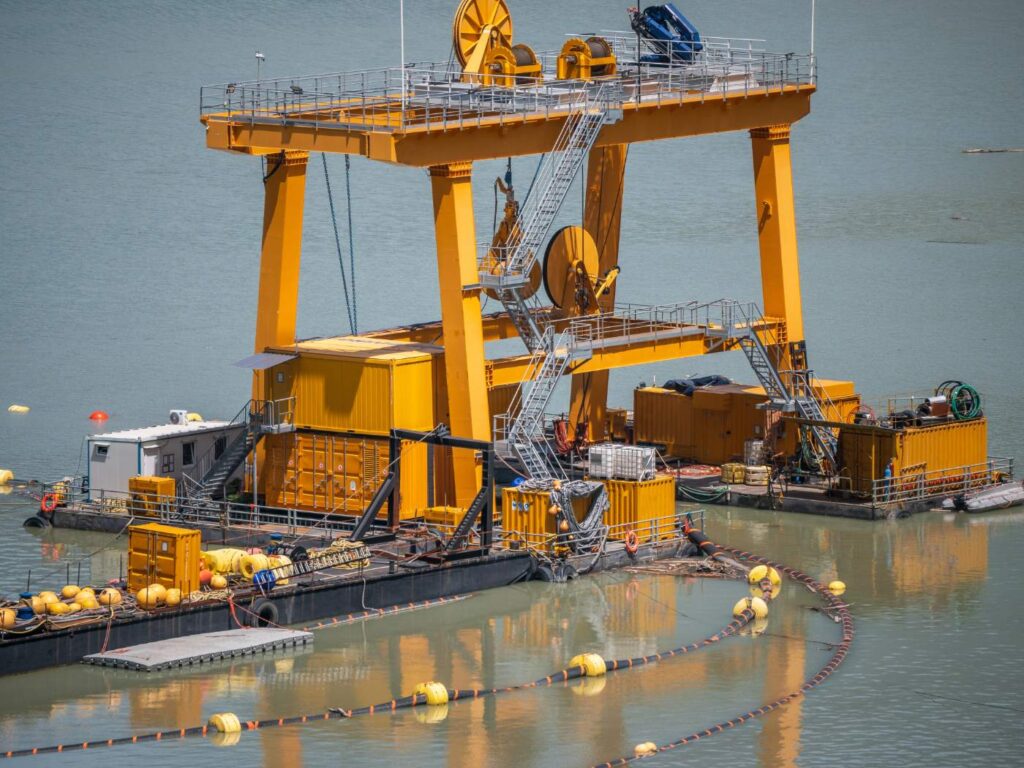
Choosing the right dredging machine for a project involves understanding the specific requirements and environmental conditions. Different dredging tasks demand distinct types of equipment to ensure efficiency and minimize environmental impact. From harbor maintenance to inland waterway cleanup, selecting the most suitable machine—whether a dredge sled or sand dredging equipment—is crucial for project success.
Harbor Dredging
Harbor maintenance requires powerful and efficient dredging machines capable of handling compacted soils, silt, and sediment buildup in navigational channels. The ideal choice for such projects is a cutter suction dredger or a trailing suction hopper dredger. These machines are designed to operate in deeper waters, removing accumulated sediments and maintaining port accessibility. By using a dredging machine with high-capacity pumps and robust cutting mechanisms, harbor authorities can ensure that waterways remain navigable, reducing risks for large vessels and improving port efficiency.
Sand Mining and Extraction
Sand mining requires specialized sand dredging equipment that can handle granular, loose sediments efficiently. Jet suction dredgers and horizontal auger dredgers are commonly used for sand extraction because of their high pump output and ability to handle fine materials. These dredging machines are often employed in coastal regions, riverbeds, and sand pits to extract materials used in construction and land reclamation projects. For operations where depth and accessibility vary, dredge sleds can also be utilized to remove sand from shallow or narrow areas without disturbing the surrounding environment.
Environmental Cleanup
In environmentally sensitive areas, using the right dredging machine is critical to minimizing ecological disruption. Machines like cutter suction dredgers with precision cutting heads and controlled suction are ideal for removing contaminated sediments without dispersing pollutants. Additionally, dredge sleds are an excellent choice for projects that require gentle excavation, as they minimize the disturbance to aquatic habitats while efficiently removing silt and debris. Choosing environmentally friendly sand dredging equipment with sediment containment features further helps maintain water quality during cleanup operations.
Construction Projects
During construction projects, especially those involving channel creation or land reclamation, dredging machines play a vital role. Dredge sleds are particularly effective for creating small channels or clearing sediment buildup around construction sites. Their compact size and mobility make them ideal for maneuvering in confined or shallow areas, where traditional dredgers may struggle. In larger construction projects requiring substantial material displacement, cutter suction dredgers are often used for their powerful excavation and sediment transport capabilities.
Inland Waterway Maintenance
Maintaining small rivers, lakes, and canals requires compact and portable dredging machines that can be easily deployed and operated. Dredge sleds are highly effective for these tasks due to their lightweight design and ease of use in shallow water conditions. They efficiently remove accumulated sediments, preventing blockages and maintaining water flow. Alternatively, small-scale sand dredging equipment can be used for periodic maintenance, especially in areas prone to sedimentation or sand buildup.
By carefully matching the dredging machine to the project’s specific needs—whether harbor maintenance, sand mining, environmental restoration, construction, or inland waterway upkeep—project managers can achieve greater efficiency, cost savings, and reduced environmental impact. Choosing the right equipment, such as sand dredging equipment or a dredge sled, ensures that dredging operations are not only effective but also environmentally responsible.
Comparing Different Dredging Machines
Choosing the right dredging machine for a specific project depends on factors like sediment type, water depth, and project scale. Here’s a quick comparison of the most commonly used dredging machines, including sand dredging equipment and dredge sleds, to help you make an informed decision.
Cutter Suction Dredgers
Cutter suction dredgers are powerful dredging machines designed to cut through compacted soils and heavy sediment layers. Equipped with a rotating cutter head and suction pump, they are ideal for large-scale dredging projects such as harbor deepening and land reclamation. Their robust construction makes them effective in handling dense materials like clay and rock while efficiently transporting dredged material through pipelines.
Jet Suction Dredgers
Jet suction dredgers are specifically designed for handling loose sediments like sand. These sand dredging equipment use high-pressure water jets to break up the sediment, which is then suctioned and transported. They are commonly used in sand mining, river dredging, and beach nourishment projects where fine, granular material needs to be moved quickly and efficiently.
Bucket Dredgers
Bucket dredgers are traditional dredging machines that use a series of buckets to scoop up hard, consolidated materials such as gravel, stones, or compacted sediment. They are well-suited for projects requiring the removal of dense or rocky material and are commonly used in the excavation and maintenance of navigational channels. Although slower than other dredging types, they are reliable for tough dredging tasks.
Dredge Sleds
Dredge sleds are compact and portable dredging machines ideal for shallow, narrow, and sandy environments. They are specifically designed for gentle sediment removal, making them suitable for small water bodies, pond cleaning, and maintenance of narrow channels. Due to their lightweight and low-impact design, dredge sleds are preferred for environmentally sensitive projects.
Factors to Consider Before Purchasing or Renting
When deciding whether to purchase or rent a dredging machine, several factors should be carefully evaluated to ensure cost efficiency and operational success. Understanding these key aspects will help you make an informed choice, whether you need sand dredging equipment or a dredge sled for your project.
Project Duration
The length of your project significantly influences whether to buy or rent a dredging machine. For long-term, continuous dredging needs, purchasing might be more economical as it eliminates recurring rental fees. On the other hand, short-term or sporadic projects are better suited for rental to avoid maintenance and storage costs.
Cost Analysis
Budgeting is crucial when selecting a dredging machine. Consider not only the initial purchase or rental price but also ongoing expenses like maintenance, fuel, and operator wages. Renting often includes maintenance support, reducing unexpected costs. For projects involving sand dredging equipment or dredge sleds, calculating transportation and setup costs is also essential.
Environmental Considerations
Using eco-friendly and compliant dredging machines minimizes environmental impact and helps meet local regulations. Opt for models that include sediment containment features, especially when working with sand dredging equipment in sensitive areas. Additionally, choose machines designed for minimal disturbance, like dredge sleds, when operating in shallow or ecologically fragile waters.
Operator Skill Level
Complex dredging machines like cutter suction dredgers require skilled operators, while simpler devices such as dredge sleds can be managed with basic training. Ensure that your team has the necessary skills or opt for rental agreements that include operator training. Investing in operator expertise can significantly improve project efficiency and reduce downtime.
Supplier Reputation
Whether purchasing or renting, it’s crucial to work with reputable suppliers who provide reliable and well-maintained dredging machines. Look for companies with positive customer reviews and a proven track record. Choosing trusted providers for sand dredging equipment and dredge sleds ensures you receive quality machines backed by technical support and maintenance services.
Conclusion
Selecting the right dredging machine for your project is crucial to achieving optimal efficiency and cost-effectiveness. Whether opting for long-term ownership or short-term rental, carefully evaluating factors such as project duration, cost, environmental impact, operator expertise, and supplier reliability will help you make an informed decision. By choosing the appropriate equipment—be it sand dredging equipment, a dredge sled, or a more robust cutter suction dredger—you ensure smooth operations, reduced downtime, and successful project outcomes.
